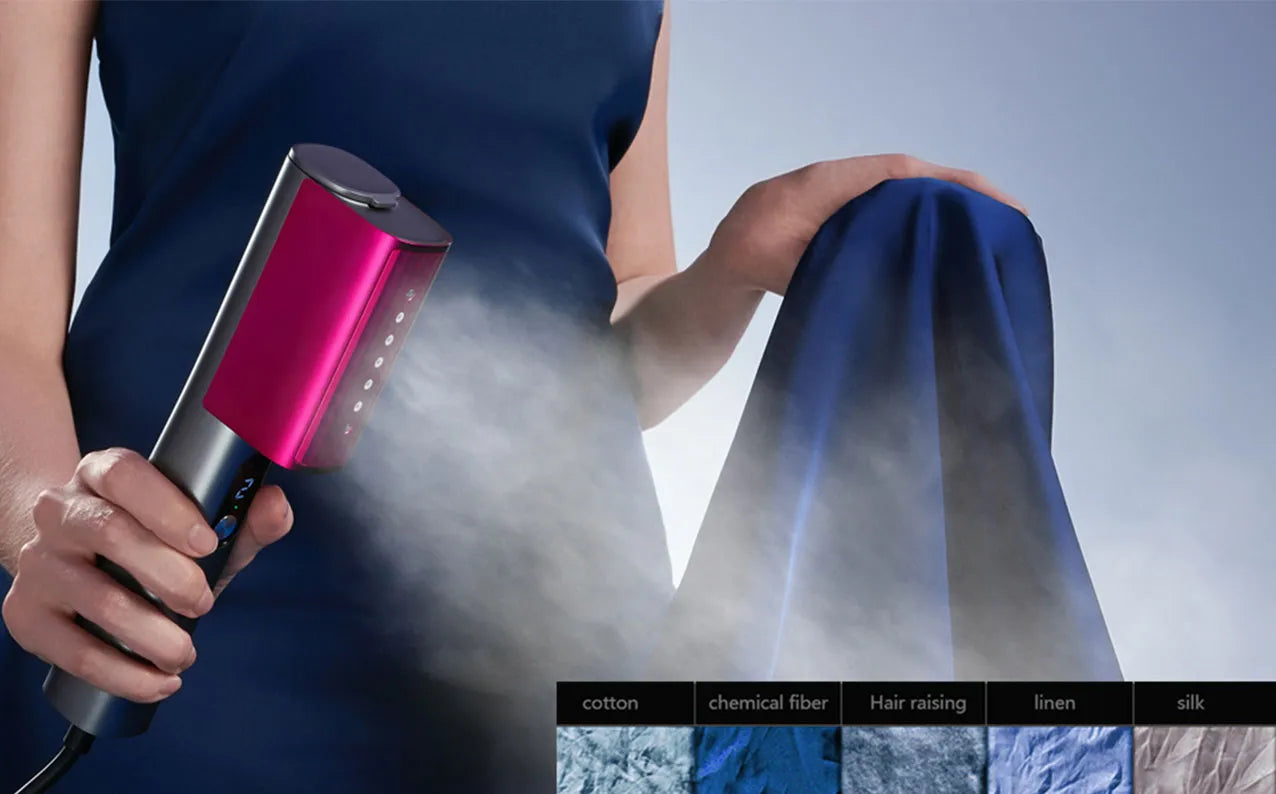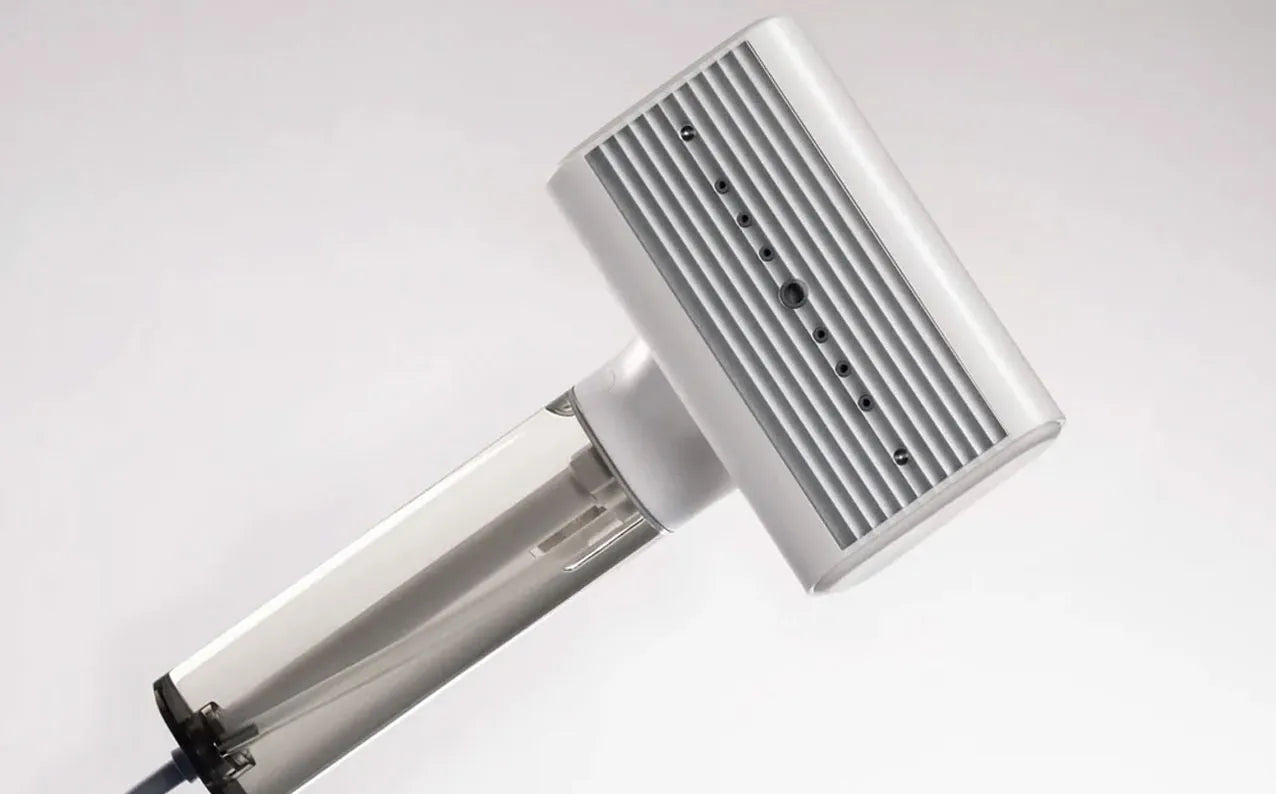I'm a dentist, but my hand steamer for clothes has become the most "low-key" companion in my clinic.
A personal reflection on precision, order, and why even doctors need a hand steamer for clothes.
01 | From the examination chair to steam mist: The details of the profession determine trust
Over the years working in the clinic, I gradually realized that the job of a dentist is far more than just fixing teeth.
What we deal with is "trust".
Every day, the patients I encounter start from eight in the morning and continue until six in the afternoon: there are children who tremble with anxiety, there are office workers hurrying home from work, and there are brides preparing for their weddings.
When they enter the exam room, the first thing they see is not the instruments in my hand, but me - that clean, straight, and wrinkle-free lab coat.
A wrinkled coat will subconsciously make one think of "carelessness";
while a neatly folded doctor's uniform will make one feel that "he is very steady in his work".
So when I first brought a hand steamer for clothes into the clinic, it was out of a kind of almost obsessive cleanliness obsession.
Every morning at seven o'clock, after turning on the light in the exam room and starting the autoclave, the last step I did was to use that steamer to quickly iron my lab coat.
It only needed fifteen seconds to preheat,almost the same as the time it takes for a coffee machine to start up.
When that faint cloud of steam rose, the air in the entire exam room also became quiet.
At that moment, I knew: Today could begin.
02 | The 'Image Crisis' Only Medical Professionals Understand
Many people think that doctors don't need to pay much attention to their appearance.
But in dentistry, the distance between us and our patients is often only about eight inches.
At such a close distance, even the slightest hint of body odor, wrinkles, or dust would be magnified into an impression of unprofessionalism.
Therefore, besides sterile procedures, I'm almost obsessive about keeping things clean and tidy.
One afternoon after the surgery was over, the nurse reminded me, "Doctor, the patient who was shooting the promotional video arrived early at 3 p.m."
I glanced at my glasses - the white coat under the protective suit had been marked with several deep lines.
At that moment, I didn't panic because I knew there was that hand steamer for clothes under the cabinet.
It only took me two minutes. I gently passed the steam over the collar and shoulders, and when the fog cleared, the dress regained its crispness.
Later, the patient said to me, "Doctor, you really look like someone out of a TV drama."
I smiled. That "impression of neatness" actually came from a small hand steamer.
03 | When it comes to steamers, I'm not impressed by looks — I judge them on whether they run reliably and safely.
Here are the four indicators that I have personally summarized (which can be directly referred to by colleagues):
These are the four practical checks I actually use on the job:
- Preheating time ≤ 30 seconds — Preheat under 30 seconds — patients shouldn't be kept waiting, so quick readiness matters.
-
Continuous steam for ≥ 10 minutes — At least 10 minutes of continuous steam — enough to finish two coats or a few staff uniforms in one go. -
Anti-drip and anti-leak structure — Anti-drip design is essential — a clinic can't have water spots on scrubs or paperwork. -
Lightweight body (< 1 pound) — Lightweight (under about a pound) so you can use it repeatedly without your hand getting sore.
In practice I found that certain Nesugar models strike a good balance: white body, 15-second preheating, stable dry steam, 10-minute battery life, and automatic power-off design.
Those specs match what we need in clinic work — quiet performance, fast readiness, and dependable output.
04 | Clinic Daily Operations: Unanticipated Uses of the Steamer
Beyond clothing, I found a few other practical uses:
- Cleaning the curtains in the clinic: The curtains and room dividers often get dusty. Using steam can not only disinfect but also remove wrinkles.
- Tablecloth smoothing: Before holding a meeting, running a free clinic, or taking promotional photos, use it to keep the display cloth smooth and make the visuals cleaner.
- Patient education video shooting: I occasionally make short videos about oral health. Even if the background cloth gets wrinkled, it can be fixed immediately.
They might seem small, but in medicine those little things often shape how professional we appear.
05 | What I Value Most: "Safety and Hygiene"
As a clinician, I pay close attention to how safe equipment actually is.
So I opt for machines with dry-burn protection and heat-resistant housings.
In addition, cleaning must also be standardized:
I will rinse the water tank with distilled water once a week;
I will descale once a month using a vinegar solution;
After use, make sure to empty the remaining water and dry the body.
It feels tedious sometimes, but like sterilizing instruments, a clean steamer makes us more confident using it.
06 | The Minutes After Work
Sometimes, after a whole day of work, I would iron that lab coat by myself before the clinic turned off the lights.
Those minutes are quiet — the soft hiss of steam and the faint smell of warm cotton fill the room.
That reminds me of finishing a well-executed root canal — steady, focused, and satisfying.
I often say that the steamer is not just a tool to me, but more like a psychological ritual.
It allows me to find a bit of my own sense of stability amidst the hustle and bustle of my career.
07 | My practical advice: If you also want to get it
For colleagues who must stay polished, here are a few practical tips:
- For home or dormitory use: Choose the lightweight model, which is portable and foldable.
- Business trip / Lecture: For travel or lectures: choose dual-voltage models and ones with good anti-drip engineering.
- Medical/Professional Facilities: Choose models with continuous steam stability and automatic power-off protection.
- Cleaning and Maintenance: Adhere to the principle of "less water, frequent cleaning, and upright placement" to extend the lifespan.
Whatever you pick, don’t treat a steamer as a direct replacement for an iron; it’s the finishing touch, not the whole job.
Conclusion | Professionalism also stems from that single puff of steam
True professionalism is not just about superb skills, but also about respecting the details.
Every morning when I watch that column of white steam rising in the clinic,
what comes to my mind is not just the neat clothes,
but the commitment we have to our patients, to ourselves, and to this profession.
A hand steamer for clothes,
Perhaps not a medical device, but it makes professionalism more complete -
It makes "cleanliness" a gentle force.






